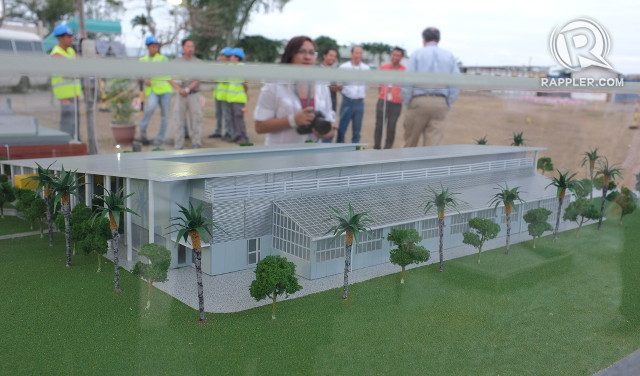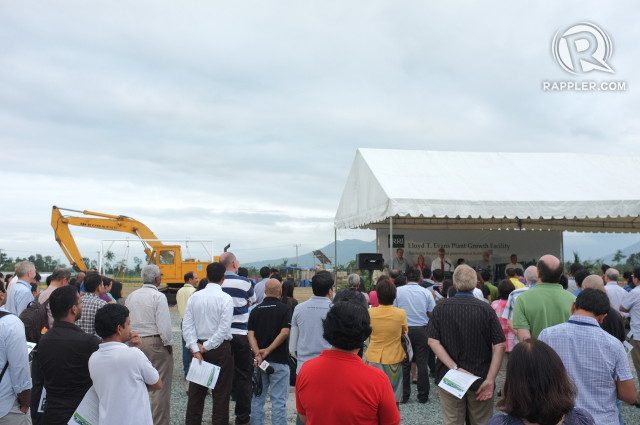SUMMARY
This is AI generated summarization, which may have errors. For context, always refer to the full article.

LAGUNA, Philippines – Scientists and government officials led the groundbreaking ceremony for a new research facility that will be devoted to studying the impacts of climate change on agriculture.
The ceremony took place on Tuesday, January 27, inside the International Rice Research Institute (IRRI) compound where the building will rise.
Named the Lloyd T. Evans Plant Growth Facility, it is set to become a “state-of-the-art” building with 8 controlled-environment glasshouses, plant growth chambers, and plant processing and potting laboratories. But the facility’s most dominant feature will be a large seed processing and storage facility.
The construction of the $10-million facility, named after a world-renowned Australian plant physiologist, was funded by the Australian government. It is expected to be operational by the end of 2015, said IRRI Deputy Director General for Research Matthew Morell.
Although there are similar controlled-environment laboratories in Australia and Europe, this new IRRI facility “will be one of the most modern,” said Morell.
What sets it apart are the latest in sensor technology, computing power for collecting data and more precise controls for changing environmental parameters. It is also one of the few facilities to be fine-tuned for rice research.
Equipped with such technology, the facility will allow scientists to study how rice is affected by changes in the environment. (READ: 3 types of rice ready for climate change)
“It’s important for us to predict future climates and prepare plants or rice crops so they can flourish in those environments,” said Morell.
Predicting nature
The controlled-environment glasshouses and plant growth chambers will enable researchers to manipulate temperature, relative humidity, light intensity, photoperiod systems, water management systems, and precise control of atmospheric gases.
This would give them a more accurate picture of how rice plants would be affected by wide-ranging environments, even the extreme environments that may become the norm in a world with a rapidly changing climate. (READ: World’s next ‘miracle’ rice could be grown in PH)

Rice is a particularly important crop to safeguard against the destructive effect of global warming. The crop is a staple food for 3.5 billion people – around half of the world’s population.
In Asia, rice contributes up to 70% of the calorie intake of the impoverished who number around 600 million, according to IRRI.
During the ground-breaking ceremony, Senator Cynthia Villar, chairperson of the Senate committee on agriculture, said that the research center will directly benefit Filipino farmers.
“This is very good for us because we are the number one at risk due to climate change. They will produce plants that will be adaptable to every climate.”
Global warming is seen to cause more intense droughts and more destructive typhoons. It may bring about a world with a lot of carbon dioxide in the atmosphere and where salty ocean water may reach crop fields thus affecting their productivity.
Some general trends already being felt are increases in temperature, longer dry seasons, colder night time temperatures and more exposure to destructive typhoons – all of which have grave consequences on food crops.
More collaboration
Scientists all over the world have conceded that climate change is a major threat to food security all over the world.
Australian funding for the facility is partly due to effects already being felt, said Morell.
“Being one of the driest continents on the Earth, it has first-hand experience of climate change. It has a rice industry that has been affected by recent droughts. This will be a facility that Australia should benefit from just as much as other rice-producing countries.”
Morell hopes that such a laboratory can encourage more scientific work on rice.
Hundreds of scientists are expected to make use of the equipment. Such a high-tech laboratory may also serve as a “magnet” to attract more collaborators from different research institutes all over the world. – Rappler.com
Add a comment
How does this make you feel?
There are no comments yet. Add your comment to start the conversation.